What Is Rebar Size and Rebar Diameters?
Important Point
A rebar, short for reinforcing bar and central to the concept of rebar meaning, is a steel bar used in concrete to provide extra strength to the structure.
There are generally different sizes of rebar which defines the overall characteristics of that rebar, higher size of rebar means higher nominal diameter and higher weight and the lower size of rebar represents lower ones.
High-size rebar is generally used for heavy loads and lower size rebar is used for light loads.
Rebar diameter is the nominal diameter which is different in types, there are various diameter rebar is available in the market.
Higher diameter represents higher strength and the weight of that rebar is also high and lower diameter rebar is used in the light structures for light uses.
Also, read: What Is Unit Weight | What Is Density | What Is Unit Weight Material | Unit Weight Building Materials
Useful Article For You
- What Is a Contour Interval
- What Is Tile
- What Is the Difference Between a Shower Pan and a Shower Base?
- What Is a Window Panel
- Type of Arch
- What Is the Measurement for a Queen Size Bed
- What Is Considered Livable Space
- What Is One Way You Can Save Electricity?
- What Is a Bundle of Shingles
- What Is a Gallon of Water Weigh
- What Is Sand Blasting
- What Is a Span Bridge
- What Is the Little Black Diamond on a Tape Measure
- What Is a Louvered Door
- What Is a Spread Footing
- What Is Leveling
- Different Types of Beam
- What Is Pedestal
- What Is Plumbing Fixtures
- What Is Slab Construction
- What Is Calacatta Quartz
- What Is Auxiliary View
- Sheepsfoot Roller
- What Is 1 Flight of Stairs
- What Is Refractory Cement
- Dry Pack Concrete
- What Is Luminous Flux Vs Lumens
- What Is a Frost Wall
- What Is an Undercoat
- What Is Road Pavement
- Arch Foundation
- What Is a Stair Landing
- What Is a Spandrel Beam
- What Is Pier and Beam Foundation
- What Is a Pile Cap
- What Is a Mat Foundation
- What Is a Floating Slab
- What Is the Purpose of Foundation
- What Is a Flush Door
- What Is Residential Construction
- What Is the Best Foundation for a House
- What Is a Benchmark in Surveying
- What Is a Engineering Drawing
- What Is an Admixture
- What Is the Standard Size Water Supply Line
- What Is the Difference Between Tension and Compression?
- What Is a Tremie
- What Is Tributary Area
- What Is Shoring Construction
- What Is a Cason
- What Is Wall Putty
- What Is the Difference Between Mortar and Concrete
- What Is Bhk
- What Is Sbc of Soil
- What Is Plinth Level
- What Is Water Proofing
- What Is Mix Design of Concrete
- What Is Fine Aggregate
- What Is Retention Money
- What Is Design Mix
- What Is Isometric Scale
- What Is Development Length
- What Is Superelevation
- What Is Wall Made Of
- What Is Micro Piling
- What Is Soil Stack
- What Is a Half Wall Called
- What Is Flagstone
- What Is a Cinder Block
- What Is Floors
- What Is a Parapet in Construction
- What Is Concept Drawing
- What Is a 30 Degree Angle
- What Is a Mezzanine Level
- What Is Plinth Area
- What Is Precipitation
- What Is a Soffit
- What Is the Difference Between Residual and Transported Soil
- What Is a Drop Manhole
- What Is Oblique View
- What Is a Flyover Bridge
- What Is Tie Beam
- What Is the Cost of 1 Bag Cement
- What Is Well Foundation
- What Is the Principle of Chain Surveying
- What Is Dlc in Road Construction
- What Are the Advantages of Levelling
- What Is Hardened Concrete
- What Is Plinth Protection
- What Is Wbm Road
- What Is Measurement Book
- What Is Traversing in Surveying
- What Is the Space Between Windows Called
- What Is a Moment Frame
- What Is 53 Grade Cement
- What Is True Slump
- What Is Joisted Masonry Construction
- What Is the Back Azimuth of 180 Degrees
Types of Rebars
There are various types of rebars, as detailed in this comprehensive rebar chart, which are listed below…
- Carbon steel rebar.
- Stainless steel rebar.
- Galvanized rebar.
- Glass fiber reinforced polymer (GFRP) rebar.
- Epoxy coated rebar.
- Welded wire fabric (WWF) rebars.
- Expanded metal rebar.
1. Carbon Steel Rebar
In commercial and residential projects, the most commonly used rebar is carbon steel rebar, often chosen for its commercial length of rebars.
The carbon steel rebar is more durable than other rebar’s and also exceptionally cost-effective, for this reason, the uses in the construction of this rebar are increasing day by day.
But with the high moisture exposure to the project the carbon steel rebar may not hold up well.
For this above reason, the use of carbon steel rebar in the high-humidity or high moisture content areas may be risky.
The carbon steel rebar, a key component in rebar sizing, is available in the market in various sizes that’s below- D10, D12, D16, D20, D25, D28, D32, D36, D40, 50, and also available in D60.
2. Stainless Steel Rebar
Nowadays, in construction, stainless steel rebar became a viable material and it is not cheap as carbon steel rebar.
The stainless steel rebar, known for its significant steel diameter, is generally used in constructing various structures like roads, bridges, piers, and it is used in much more heavyweight supporting structures.
The uses of stainless steel in the construction provide more durability from the carbon steel rebar because it can prevent corrosion in the structure and also provide long-lasting life to the structure.
The stainless steel rebar available in the market in various sizes that’s below- D10, D13, D16, D19, D22, D25, D32, D35, D38.
3. Galvanized Rebar
In the construction market of rebar, the galvanized rebar is one of the most expensive rebars that can deter corrosion like stainless steel because in the galvanized rebar a special water coating is added and it is also dipped into a zinc solution.
From epoxy-coated rebar, the galvanized rebar material is an excellent alternative.
In the construction site during the installation and shipping, the galvanized rebar provides 40% more corrosion resistance and also provides better holding like other materials
4. Glass Fiber Reinforced Polymer (GFRP) Rebar
A glass-fiber-reinforced polymer (GFRP) rebar is also called fiberglass rebar and it is also used for project which is exposed to the water.
Glass fiber reinforced polymer rebar is also free from corrosion and also from the traditional steel rebar, it has greater tensile strength.
By using this Glass fiber reinforced polymer rebar in the construction you can save the shipping expenses because it is 75% lighter than Steel.
This material is also shockproof of it has non-conductive electrical properties.
5. Epoxy Coated Rebar
In the high moisture or high humidity construction project the epoxy coated rebar is generally used.
In the rebar, the corrosion process is very slow because this rebar is coated with high thick epoxy.
But the epoxy coated rebar easily can be damaged or kept scratched during shipping on the construction site.
The use of epoxy-coated rebar in construction can decrease the construction cost of the structure.
6. Welded Wire Fabric (WWF) Rebar
The Welded wire fabric (WWF) rebar is made of welded low carbon steel wire with a grid pattern and compared to other materials it provides a different kind of name.
We provide welded wire fabric rebar to the reinforced concrete slab when we need to increase the overall tensile strength of the concrete.
7. Expanded Metal Rebar
The Expanded metal rebar is a rebar that is similar to the welded wire fabric rebar and in diamond shape lines it creates a metal mesh.
From a single steel sheet, the mesh is made, that is expanded and expertly cut, and when we need remedy thick plaster to support the concrete then expanded metal rebar is generally used in the construction.
Another use of the expanded metal rebar is, it is used for walking surfaces and also sidewalks, but for heavyweight or heavy vehicle traffic it is not used.
Different Types of Rebar and Their Sizes
In construction, many types of diameter of rebar are used, the details of which are available in the following rebar sizes chart.
#3 Rebar Diameter
# 3 rebar diameters are generally used for highways, swimming pool frames, and also roads, which are made of carbon steel.
In this bar, the imperial bar size is #3 the soft metric size is #10 and also the weight per unit length is 0.561 kilograms per meter.
And the diameter of reinforcement bars and the nominal areas are 9.525 mm and 71 sq mm.
#4 Rebar Diameter
The #4 rebar diameter is made of a primary composite of carbon steel and this rebar is generally used in lightweight commercial industries and residential buildings.
In this bar, the imperial bar size is #4 the soft metric size is #13 and also the weight per unit length is 0.996 kilograms per meter. The nominal diameter and the nominal areas are 12.7 mm and 129 sq mm.
#5 Rebar Diameter
The #5 is generally used for bridge, highway, construction of grade foundation, beams, walls, and also footing, and it is also used in lightweight commercial industries and residential buildings.
In this bar, the imperial bar size is #5 the soft metric size is #16 and also the weight per unit length is 1.556 kilograms per meter.
The nominal diameter and the nominal areas are 15.875 mm and 200 sq mm.
#6 Rebar Diameter
The #6 rebar is commonly used in many things like, retaining walls, foundation construction, and repair and is also used in walls.
In the #6 rebar, the imperial bar size is #6 the soft metric size is #19 and also the weight per unit length is 2.24 kilograms per meter.
The nominal diameter and the nominal areas are 19.05 mm and 284 sq mm.
#7 Rebar Diameter
The #7 rebar is generally used for medium to heavy-duty commercial construction and another use is multi-level parking purposes and also use for waterways and roads.
In this bar, the imperial bar size is #7 and also the weight per unit length is 3.049 kilograms per meter.
The nominal diameter and the nominal areas are 22.225 mm and 387 sq mm.
#8 Rebar Diameter
For medium to heavy commercial construction, the #8 rebar diameter is generally used because it has high-grade reinforcement and it is also used in a large number of projects that’s are, column and beams, shear walls, caissons, bridge abutments, retaining walls, sea walls, piers, footings and many more.
In this bar, the imperial bar size is #8 the soft metric size is #25 and also the weight per unit length is 3.982 kilograms per meter.
The nominal diameter and the nominal areas are 25.4 mm and 509 sq mm.
#9 Rebar Diameter
The #9 is used for commonly used for a wide range of demanding projects and also used for the construction of skyscrapers for stabilizing transfer slab, it is also effective in columns and beams, retaining walls, abutments, and bridges.
In this #9 bar, the imperial bar size is #9 the soft metric size is #29 and also the weight per unit length is 5.071 kilograms per meter.
The nominal diameter and the nominal areas are 28.65 mm and 645 sq mm.
Also, read: What Is Concrete | 31 Different Types of Concrete
#10 Rebar Diameter
#10 rebar is also used for heavy-duty construction projects because it has high tensile strength.
The nominal diameter and the nominal areas are 32.26 mm and 819 sq mm.
In this #10 bar, the imperial bar size is #10 the soft metric size is #32 and also the weight per unit length is 6.418 kilograms per meter.
#11 Rebar Diameter
The #11 rebar was also used for both concrete as well as steel structure and used in demanding the purpose of the construction.
In this #11 bar, the imperial bar size is #11 the soft metric size is #36 and also the weight per unit length is 7.924 kilograms per meter.
The nominal diameter and the nominal areas are 35.81 mm and 1006 sq mm.
#14 Rebar Diameter
#14 rebar is generally used to provide stability in large construction projects like tall buildings, docks, parking structures and also for industrial facilities, etc.
The imperial bar size of #14 is #14 the soft metric size is #43 and also the weight per unit length is 11.41 kilograms per meter.
And the nominal diameter and the nominal areas are 43 mm and 1452 sq mm.
#18 Rebar Diameter
In the construction market #18 rebar is one of the strong and largest bars, which is generally used for constructing projects in the marine environment, bridges, etc.
The imperial bar size of #18 and the soft metric size is equivalent to 57 rebars and also the weight per unit length is 20.284 kilograms per meter.
And the nominal diameter and the nominal area are 57.33 mm and 2581sq mm.
Useful Article for You
- Zero Force Members
- How Much Does a Yard of Concrete Weigh
- Cmu Wall Meaning
- Gradient Road
- Budget Sunroom Ideas
- What Is Gypsum Board
- Types of Vaulted Ceilings
- Well Points
- How Does Baking Soda Remove Blood from Carpet
- What Are Forms in Construction
- How Heavy Is Dirt
- Tender Meaning in Architecture
- Dark Olive Green House
- Cast in Place Concrete
- Lean to Roof
- How Tall Is an Average Door
- Grade Beam Foundation
- Window Sill Height
- Concrete Cold Joint
- Types of Traps
- Types of Pipe
- Wood Supporting Beams
- Finishing Plaster
- Home Depot Scrap Wood
- Lvl Beam Size Calculator
- Structural Shell
- Curb Types
- Msand
- Optimum Dry Meaning
- Disadvantages of Low-E Glass
- Bridge Abutment Definition
- Build Materials List
- Composite Masonry Wall
- Is Cedar a Hardwood or Softwood
- Modified Proctor Test
- Physical Properties of Sand
- Crane Machine Construction
- Types of Gable Roofs
- Door Frame Types
- How Much Does 55 Gallons of Oil Weigh
- Dog Leg Stairs
- Concrete Salt Finish
- Westpoint Bridge Builders
- Types of Porches
- Hempcrete Disadvantages
- Roof Pitch Types
- Types of Weirs
- Asphalt Floor
- Dutch Roof
- #6 Rebar Weight Per Foot
- Prizmatic Compass
- Bond Break Concrete
- Poured Concrete Wall Cost Calculator
- How Many 60 Lb Bags of Concrete in a Yard
- Wood Fence Post Spacing Chart
- Falsework
- Design of Building Structures
- Topping Slab
- Types of Cinder Blocks
- Fresh Concrete
- Door Colors for Red Brick House
- Clear Cover Concrete
- Tiles Brand
- Cement Consumption in Plaster
- Aggregate Density Kg M3
- Weight of Concrete Slab Calculator
- Is Clay Smaller Than Silt
- How to Calculate Dead Load
- Bad Concrete Work
- Stepped Foundations
- Residential Construction Cost Estimator Excel
- Different Construction Trucks
- Septic Pump Replacement Cost
- Dead Load Calculator
- Beam Vs Column
- Concrete Mix Ratio
- Caisson Foundation
- Glulam Beam Weight Calculator
- Bituminous Pavement
- M30 Mix Ratio
- Is 2502
- Reinforced Brick Work
- Plinth Level
- Trapezoidal Footing Formula
- Slab Steel Calculation
- Rolling Margin of Steel
- Top 20 Pvc Pipe Brands in India
- Top 5 Cement in India
- How Much Weight Can a 6×6 Support Horizontally
- Modulus of Rupture Formula
- Types of Curtains
- Building Estimate Excel Sheet
- How Is the Skeleton Similar to the Frame of a House?
- Which of the Following Best Explains Why Buildings Tip During Earthquakes?
Rebar Size Chart and Rebar Diameter Chart
The rebar size and diameter chart is given below.
Imperial Bar |
Weight(KG/M) |
Nominal Diameter in (Mm) |
| #3 | 0.561 | 9.525 |
| #4 | 0.996 | 12.700 |
| #5 | 1.556 | 15.875 |
| #6 | 2.240 | 19.050 |
| #7 | 3.049 | 22.225 |
| #8 | 3.982 | 25.400 |
| #9 | 5.071 | 28.650 |
| #10 | 6.418 | 32.260 |
| #11 | 7.924 | 35.810 |
| #14 | 11.410 | 43.000 |
| #18 | 20.284 | 57.330 |
Rebar
Rebar (short for reinforcing bar), known when massed as reinforcing steel or reinforcement steel, is a steel bar or mesh of steel wires used as a tension device in reinforced concrete and reinforced masonry structures to strengthen and aid the concrete under tension.
Exposed Rebar
What is this? Improperly placed rebar or rebar exposed to moisture may rust and this may weaken or damage the concrete. At times, significant damage can result from this and can be costly to repair. Homeowners who have rusted or exposed rebar should perform maintenance and repairs.
Exposed Rebar in Foundation
The first layer is mainly applied around the rebar to provide protection and anchorage. The second layer provides body to the repair in this case we used rapid set mortar mix.
Exposed Rebar Treatment
Some form of waterproofing or competent exterior paint system which works with both steel and concrete would be appropriate. Or, a fabricated cover – such as flashing, could be considered.
Rebar for Concrete Driveway
Rebar is best used in a driveway for which 5-6 inches of concrete can be poured. This is because rebar is comparatively thicker than galvanized mesh reinforcement. The proper way to use rebar reinforcement is to ensure that it is laid in the center or slightly above the center of the slab’s thickness.
Cost of Rebar Per Square Foot
Rebar cost per foot. Rebar costs $0.18 to $6.80 per linear foot, not including installation. Residential customers typically won’t exceed $2.55 per foot. With labor, you’ll spend about $1.20 to $4.55 per linear foot for most home building projects.
Rusted Rebar in Concrete
In addition, corrosion of rust steel bars does not continue inside concrete. As for the corroded steel reinforcement, when corrosion occurs in about 1 percent of steel volume, this increases bond strength. Even with a larger-scale corrosion, rust hardly reduces bond strength, unless it is loose rust.
Swimming Pool Rebar
The rebar used for swimming pool construction is grade 40 deformed bars conforming to the standard of astm a615. Grade 40 means that the yield strength is 40,000 psi and the code allowed strength is 20,000 psi.
Rebar in Concrete Piers
A larger-diameter pier should have four or more pieces of vertical rebar. The rebar provides the tensile strength needed to resist lateral stresses that can be applied to a concrete pier by ground movement, freeze cycles, and wind loads.
What Are the Different Types of Rebars?
There are different types of rebar. They are European rebar, Carbon steel rebar, Epoxy-Coated Rebar, Galvanized Rebar, Glass-Fiber-Reinforced-Polymer (GFRP) and Stainless Steel Rebar.
How Many Types of Rebar Is There?
A variety of rebar lengths and diameters are available, but there are only six common types of rebar: European (a carbon, manganese, silicon, etc. alloy); carbon steel (basic “black” rebar); galvanized; epoxy coated; glass-fiber-reinforced-polymer (GFRP); and stainless steel.
Cutting Concrete Slab with Rebar
- Measure the location of the cut carefully.
- Mark off the measurements using a highly visible marker that will not wash away when using a wet cutter.
- Choose a cutter that will handle the job easily.
- Always wear safety gear when cutting concrete.
What Is Rebar Size and Rebar Diameters?
Here, the following size of rebar and diameters.
| Imperial Bar Size | “Soft” Metric Size | Nominal Diameter (in) |
| #3 | #10 | 0.375 |
| #4 | #13 | 0.500 |
| #5 | #16 | 0.625 |
| #6 | #19 | 0.750 |
| #7 | #22 | 0.875 |
| #8 | #25 | 1.000 |
| #9 | #29 | 1.128 |
| #10 | #32 | 1.270 |
| #11 | #36 | 1.410 |
| #14 | #43 | 1.693 |
| #18 | #57 | 2.257 |
Like this post? Share it with your friends!
Suggested Read –
- Largest Commercial Roofing Companies
- Building Estimation Step by Step In Excel Sheet
- House Construction Cost Calculator Excel Sheet
- How to Calculate Slab Steel Quantity from Drawing
- House Construction Cost Calculator Excel Sheet For Ground Floor(G.F.), G.F.+1, G.F.+2, G.F.+3,
- How to Excavation Calculation in Excel Sheet | What Is Excavation | Important Point of Excavation as per IS Code
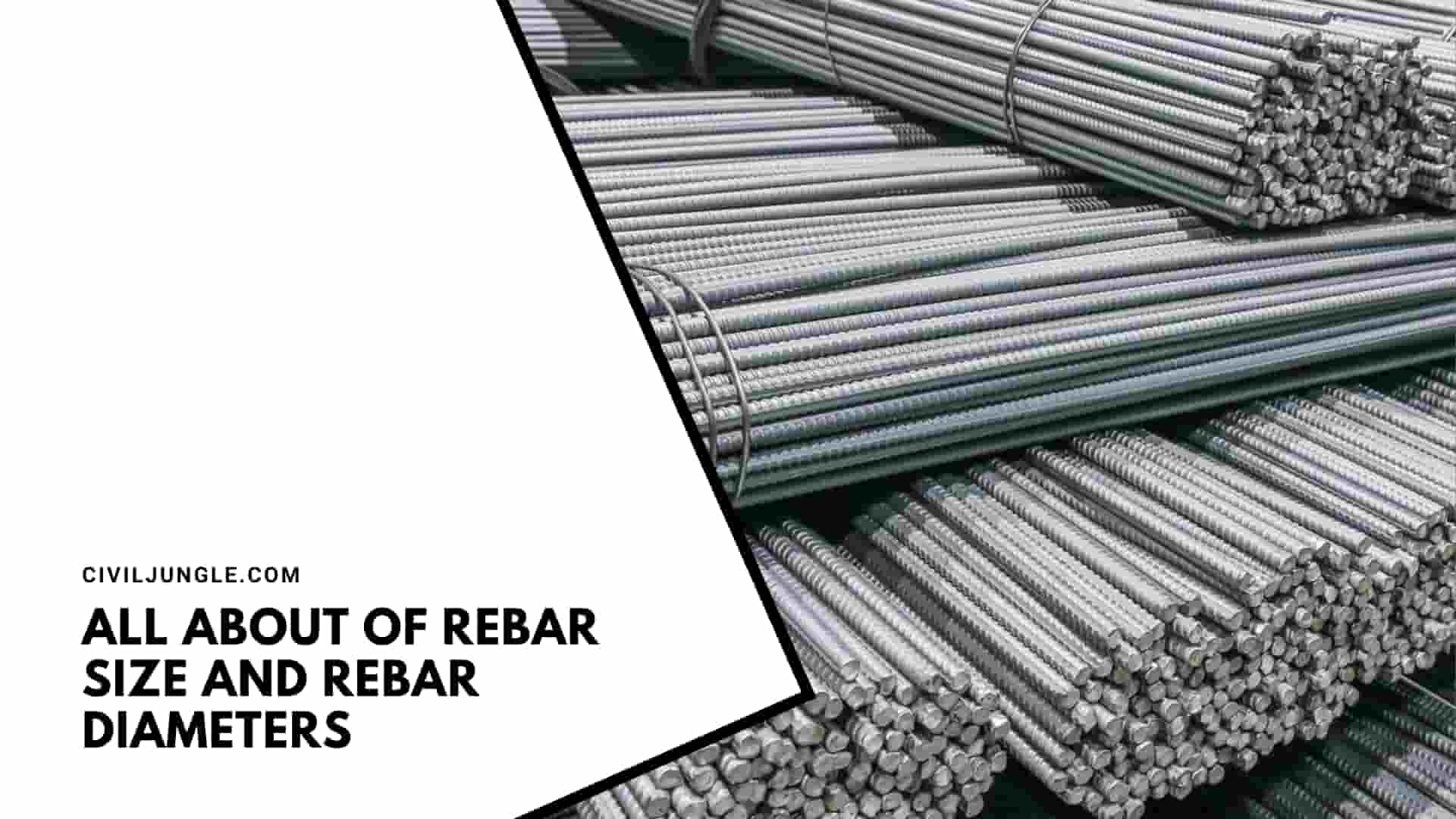
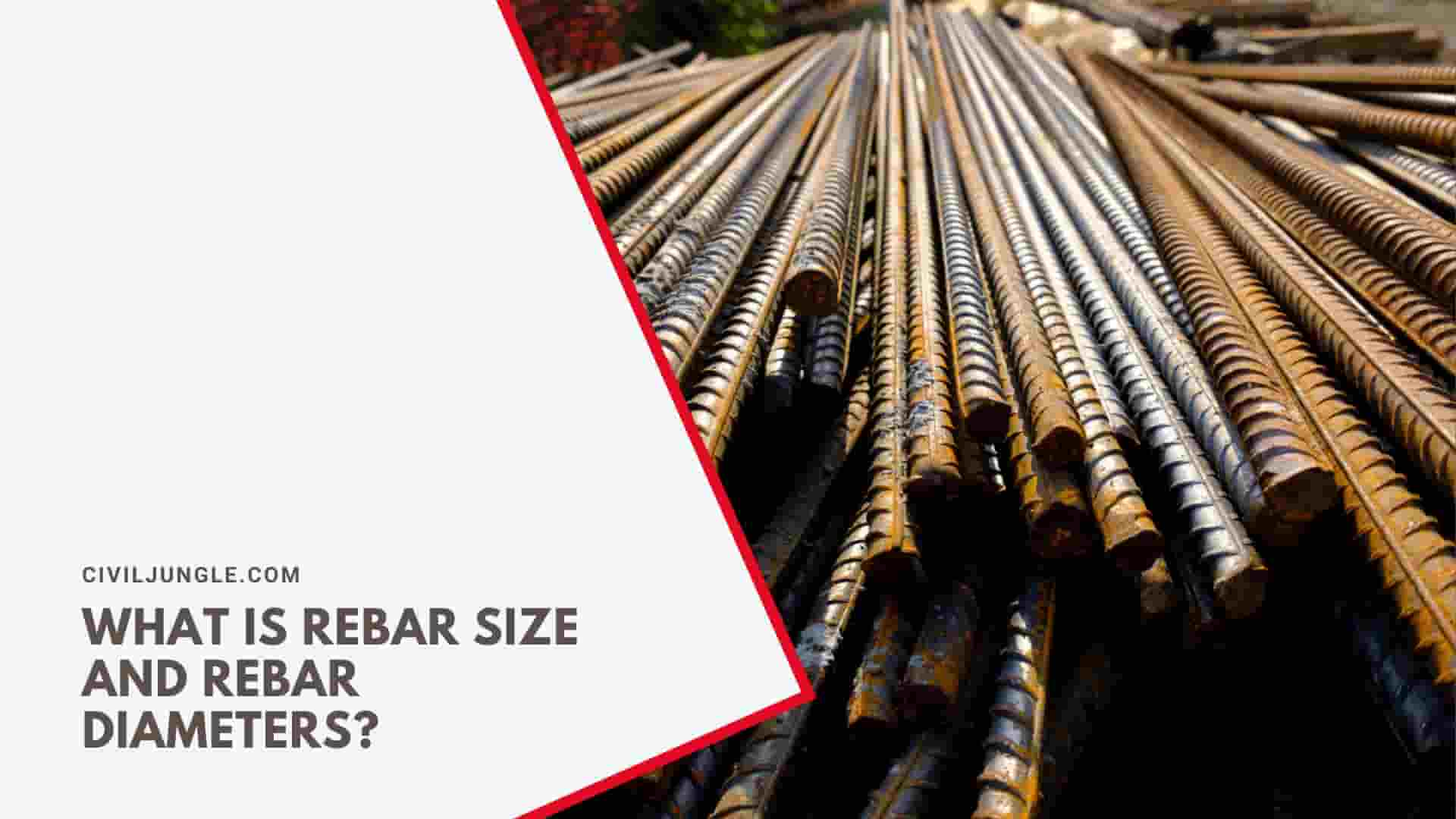
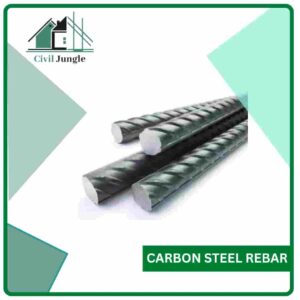
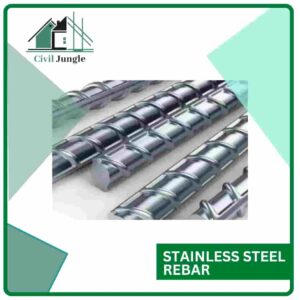

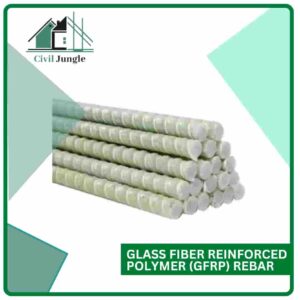
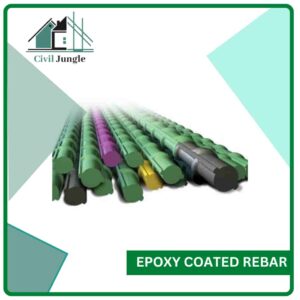
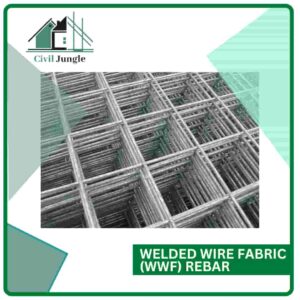
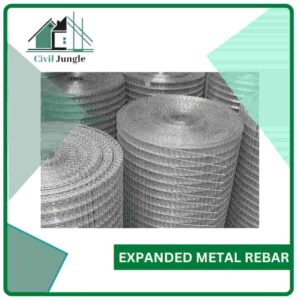
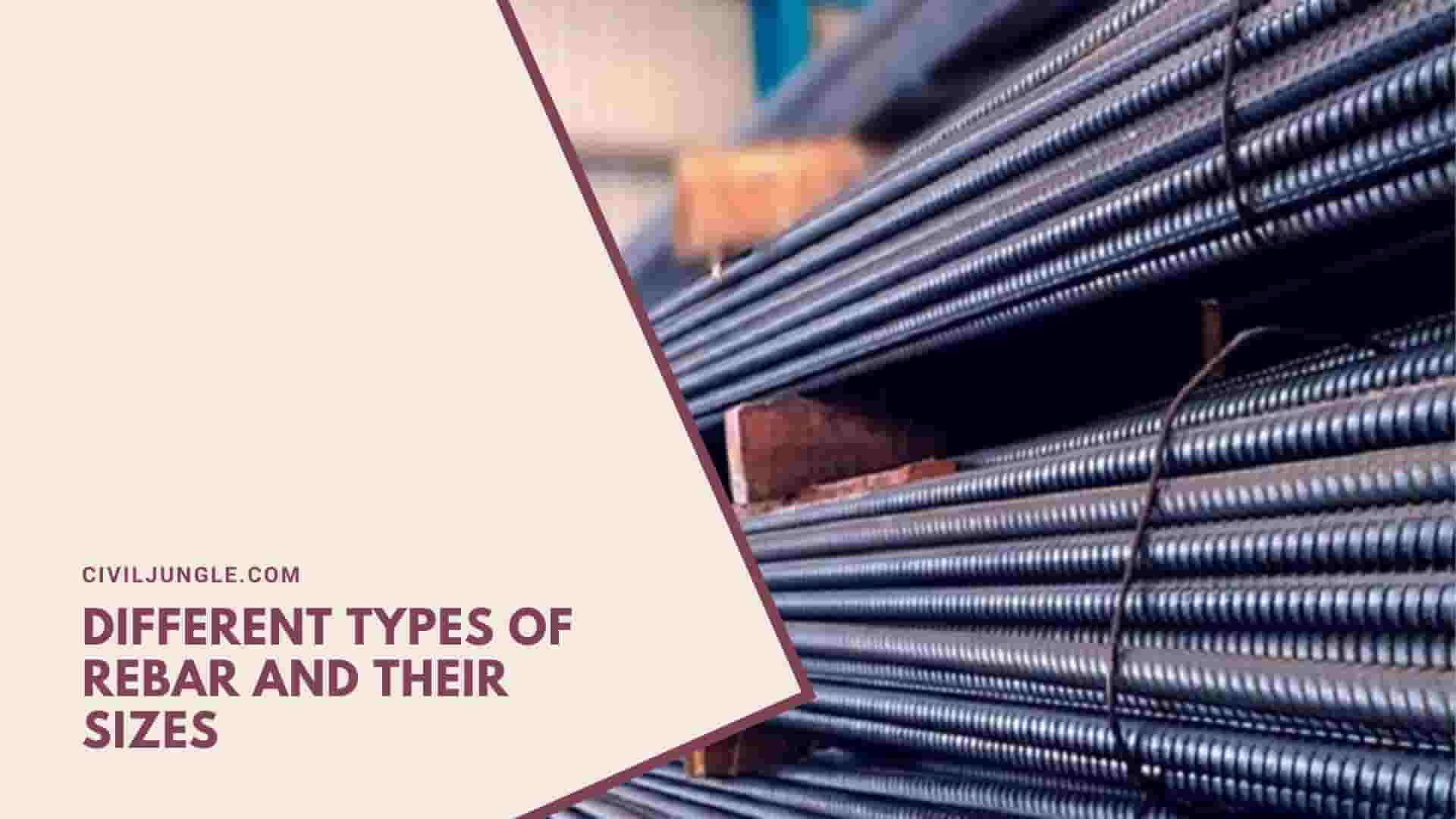
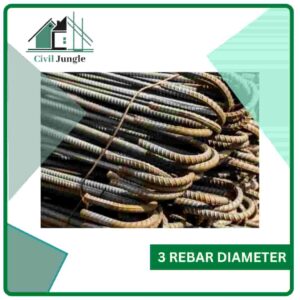
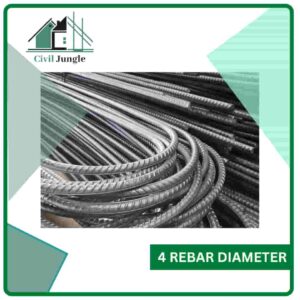
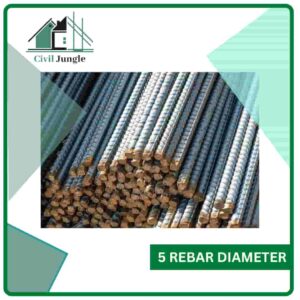
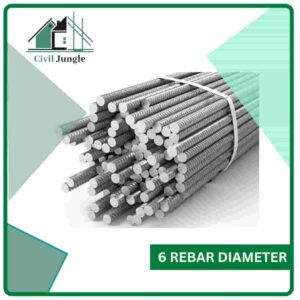

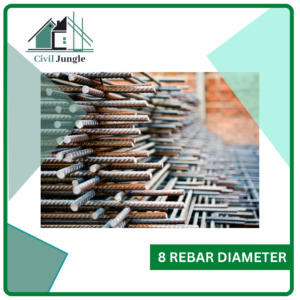
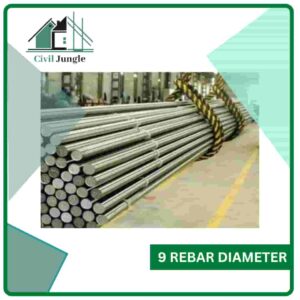
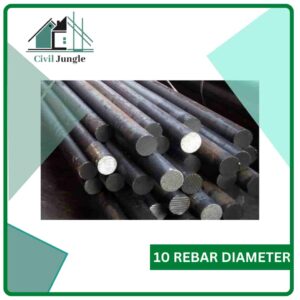
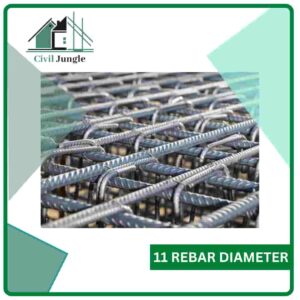

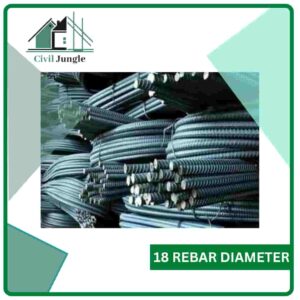

Leave a Reply